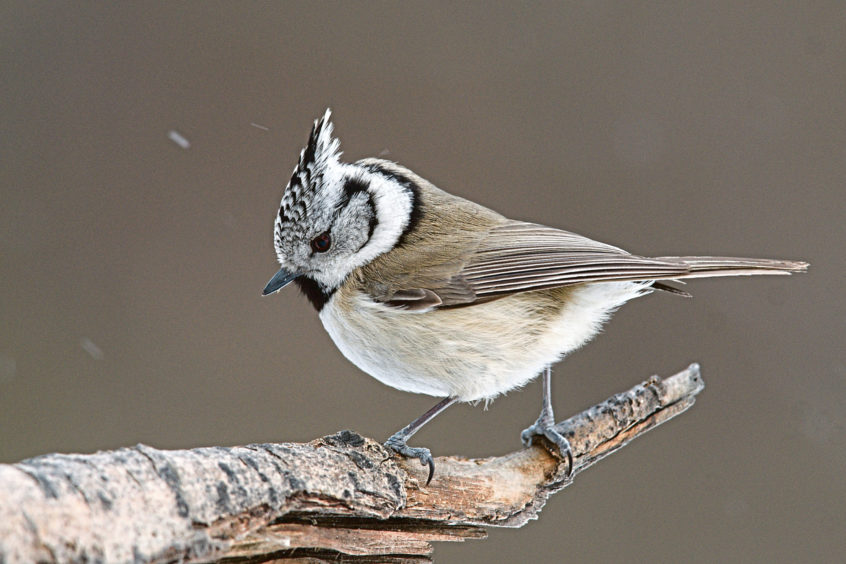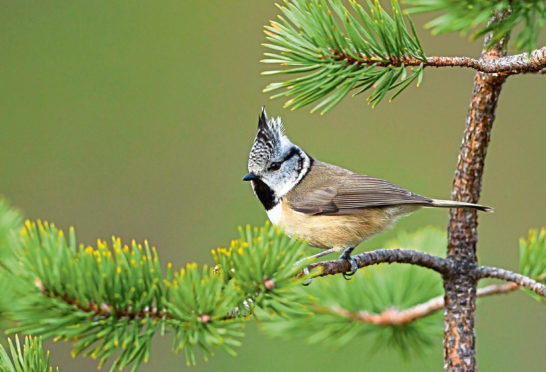Silence, total silence. Not a rustle of wind nor a peep of bird song; just an enveloping hush seeping into every pore of this wildwood in Strathspey.
This is what the dawn of time must have felt like, a mystical place where wolves and bears once roamed and where a thousand stories remain untold.
I gaze with lazy eyes at the myriad of Scots pines stretching away into the distance, thin wisps of mist clinging to the tree canopy and the lower branches grey-dripped with old man’s beard and other lichens. It had been a while since my last visit to Abernethy Forest near Aviemore and I breathed every ounce of the damp air as if it were my last.
A gentle trilling and my relaxed mind becomes alert, ears straining hard to hear it once more, for this is a most unusual call. There it goes again. I look across towards the direction of the source and immediately pick out a small party of coal tits, bounding over some young pines. But this wasn’t a coal tit I had heard, so I peer once more and in amongst them spot a wee gem of a bird with a tiny speckled crest and white cheeks – a crested tit.

They are one of the unique creatures of these northern forests. Crested tits are peculiar because they have absolutely no wanderlust whatsoever and have never spread to other central and southern parts of Scotland, despite there being suitable areas for them, especially in nearby Deeside.
Thousands of years ago around a half to two thirds of Scotland was wildwood but today only a few significant remnants remain, most notably the Caledonian pinewoods of Strathspey. It is a diverse habitat characterised by widely spaced Scots pines and a rich understorey of heather, blaeberry and juniper. Star birds include the rare capercaillie and the endemic Scottish crossbill, which is found nowhere else in the world.
There is an abundance of plants too, including cowberry, chickweed wintergreen, lesser twayblade, and twinflower. This is an intricate and delicately balanced environment, with many plants and trees depending upon mutually beneficial relationships with fungi to extract nutrients from the soil.
The wildwood comprises other tree species too, and later in the day I find myself in a birch wood overlooking the Insh Marshes, a sweeping oasis of bog, pools and watery channels stretching across the heart of the strath.
The birches here have their own magical aura, with the woodland floor covered in a soft and spongy carpet of damp moss, coloured with every hue of green imaginable. On one of these mossy mounds lies the twisted black dropping of a pine marten.
I wondered where the pine marten was. Maybe it was resting somewhere near me; but I would never know, for it was just another secret of the wildwood, never to be revealed.
Info
As well as Strathspey, crested tits occur in pine woodlands on the coastal plain of the Moray Firth, Easter Ross and south-east Sutherland. There are an estimated 1,000 – 2,000 breeding pairs in Scotland.










